paddlesteamers.info : The Internet's leading website for
Side-Wheeled Paddle Steamers
MS GOETHE : Removal of steam engines in
favour of diesel-hydraulic units in 2008-09 causes uproar
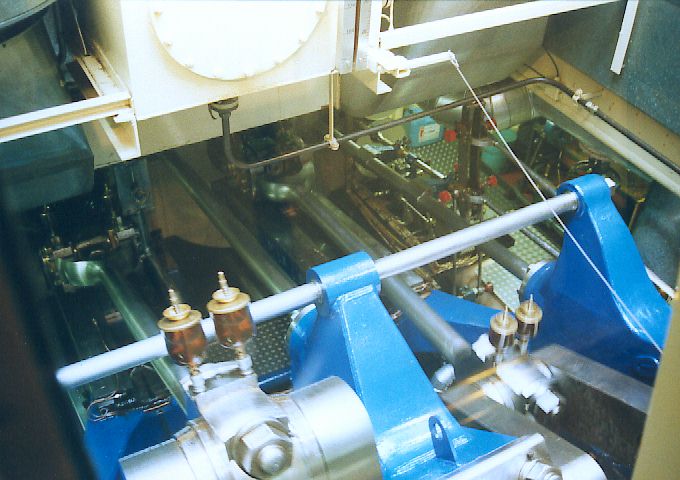
In 2008 it was announced by the Koln-Dusseldorfer
company that their last remaining paddle steamer, Goethe, was going
to be converted to diesel-hydraulic power over the following winter. The
decision to remove the compound diagonal, two cylinder engines,
built in 1917 by Gebruder Sachsenberg at Rosslau on the Elbe caused
uproar amongst steam and classic ship enthusiasts.
The reasons
given were many and varied and on the face of it, quite understandable
from a purely economic standpoint, but one of Goethe's main
attractions, at least in the eyes of many, has disappeared.
The
photo above by Gordon Stewart shows her engines in operation in 2000.
Goethe's re-engining : a report by Gordon Stewart
The management of the Koln-Dusseldorfer line took the decision to re-engine
Goethe with a heavy heart, it appears. The ultimate ownership of the company
lies in the hands of the same company which owns the steamer fleet at Dresden
-the world's largest. Clearly the directors are supporters of "heritage"
steamers, but the KD does have independent shareholders, whose interests must
also be looked after. The KD markets itself as not only the largest, but
the most modern fleet on the Rhine, with Goethe filling the "nostalgia"
role, along the most attractive part of the Rhine, between Koblenz and Rudesheim.
KD will continue to market her in this way, as a paddle wheel ship, although
not as a paddle steamer. As a nod to history, plans were quicky announced that
the ship's steam whistle would be retained and some way would be found to keep
this part of her steamer heritage "in service". Of course this was
derided by enthusiasts, but KD countered that it is really only to the small
(but not insubstantial) band of steamer-lovers that this really matters. Their
view was that most passengers either were not aware of Goethe's history or really
were not particularly concerned about it. Coach-loads of tourists on quick Rhine
trips were there to see the Loreley and the vined slopes around Ruedesheim rather
than the steam engines of Goethe. Maybe this is true, but maybe it also is an
indictment of the failure of the KD to adequately market Goethe.
It cannot
genuinely be said that Goethe is a historic vessel. Her hull and engines date
back to 1917 but nothing else. Easly in her life she was converted to a passenger
steamer from a freight and passenger ship, with her deck saloons being
considerably extended. During World War II she was sunk by enemy action and
it was not until 1953 that she reemerged after raising and rebuilding. The Goethe
which sailed on until 1989 was very much a ship of the early 1950s, with a historical
engine which was largely concealed from passenger view. When she returned to
service in 1996 having been withdrawn and possibly retired once and for all,
she re-emerged heavily rebuilt once more : a modern ship with modern facilities
with a somewhat traditional exterior appearance, and although her engines were
opened up more for viewng, they remained sealed behind glass screens and "viewing
the engines" was not one of the major experiences for Goethe's passengers.
Efforts
by enthusiasts to dissuade KD failed - the decision had been taken pretty quickly
after the public became aware of the threat. Attempts to achieve protected status
for Goethe failed : the authorities regarded her a basically a "modern"
ship - and so the one thing which made her "historic" was removed
on the basis of economics only. The ultimate irony now is that her engines,
displayed in a museum, qualify for "protected" status whilst the same
engines, in operation as they should be, did not !
Photos of the engine works by kind courtesy of Alois Mohr, Chief Engineer
Photos kindly supplied by Olivier
Bachmann

Above : One of the prime reasons given for replacing
the engine was the discovery that a crack in the engine entablature
supporting the crank,which was believed to have been caused around
the time of Goethe's sinking during World War II, had expanded to
a point where expensive repairs were needed
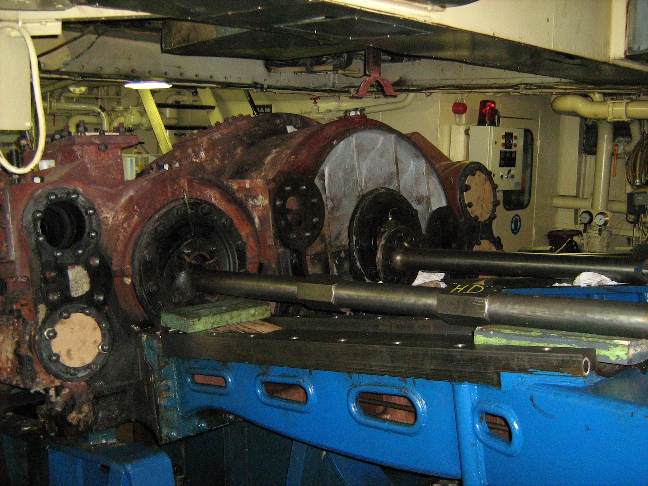
Above : High and low pressure cylinders. In most
cases using most methods of calculation, steam power is less economical
than diesel. It was believed that the cost of fuel could be reduced
by up to 50 percent with diesel engines - and in mid 2008, just
as fuel prices hit an all-time high, it seemed like the economics
justification for the decision taken was underlined.
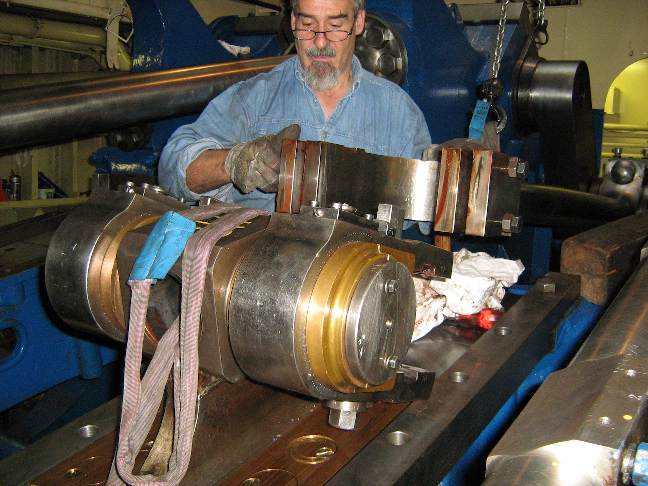
Dismantling the engines requires careful manual
work. KD decided early on that the hostorical machinery would not
be scrapped, but kept in storage. It was quickly decided that they
would be donated to the Staedtisches Museum at Cologne for display.
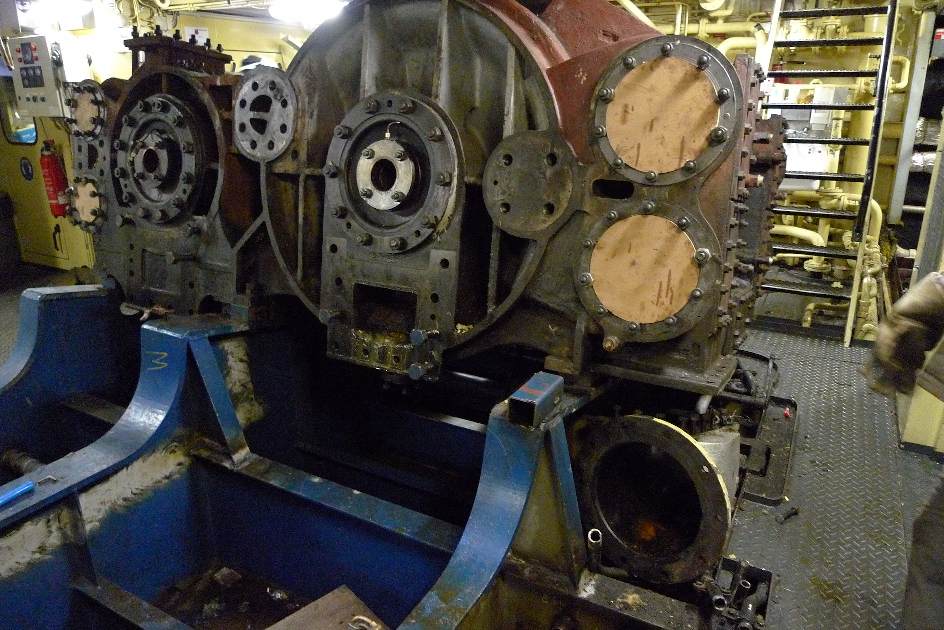
Above : Cylinders (as well as boilers) are heavy bits
of plant. With reduced weight it was believed that Goethe would
sit higher in the water and this would improve her speed and fuel
efficiency. With the heavy rebuild of the vessel in the 1990s it was
believed that, with her 750 horse power engine, she was now seriously
under powered. By comparison,
her erstwhile fleet-mate "Mainz" had compound engines
which generated 960 horse power.
Recent legislation relating
to her crew maximum working-time meant that she could not complete the
Koblenz / Ruedesheim return trip without the employment of relief
crew. Yet another reason for the need to increase her
speed.
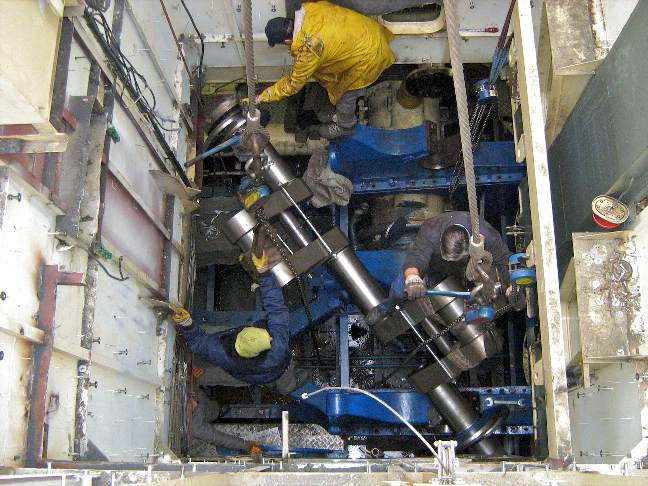
24th November 2008 : Removal of the crankshaft
Not
an unusual procedure if an engine is to be overhauled - but in this
case it was to be removal for, presumably, the last time.
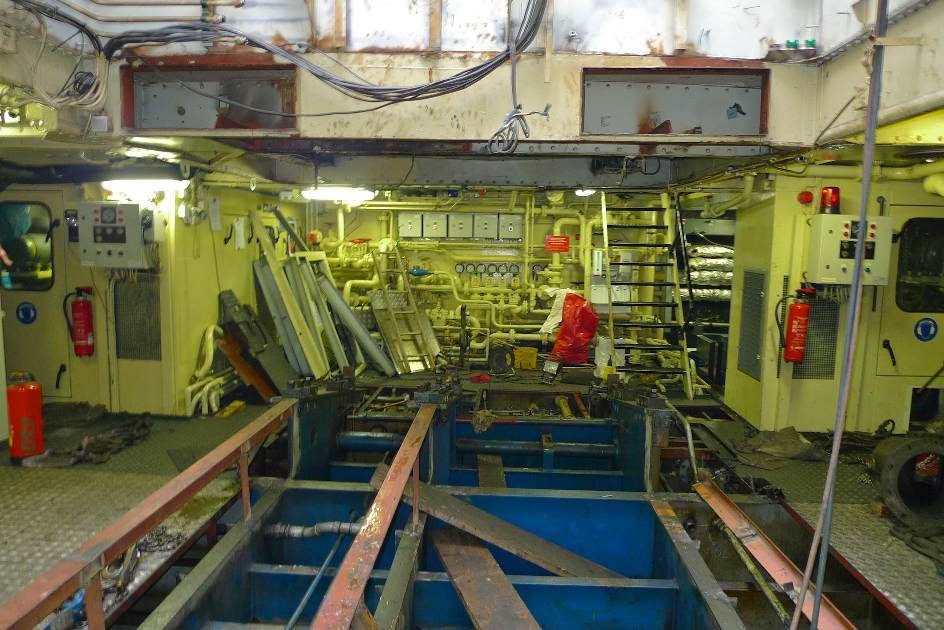
Above : An empty engine room
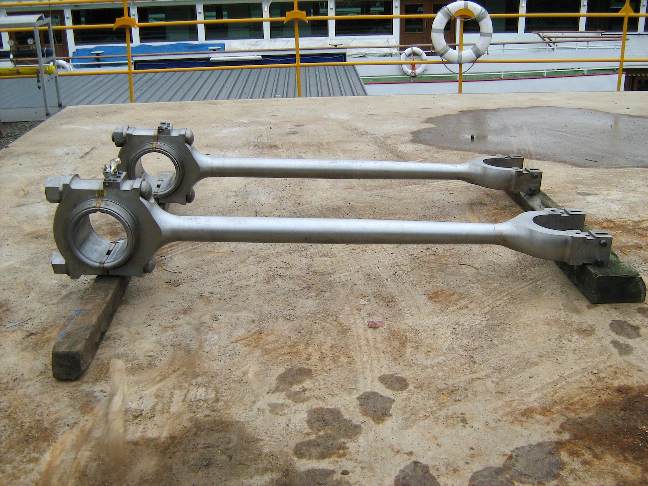
Above : Connecting rods laid out on the quayside after
removal from the hull. Pistons were another source of worry. The
previous season, Goethe suffered a breakdown and the loss of a lot
of sailing time when a piston fractured. She was only saved by the
fact that one of similar dimensions was in preservation : the former
Rhine paddler Cecilie's engines were in private ownership in the
Netherlands and the appropriate piece was made available. Re-casting
the component would have taken time - and a lot of money.
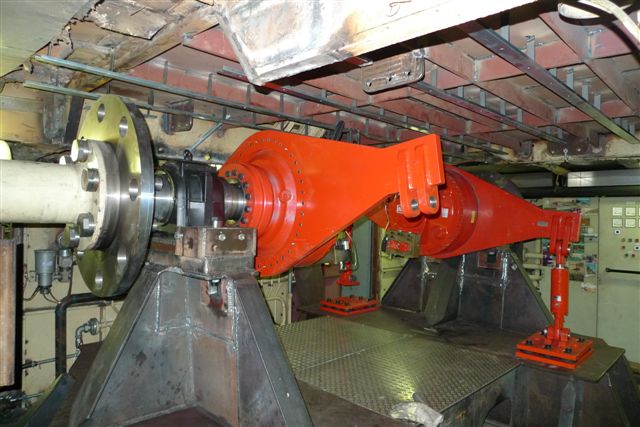
Above : 13th March 2009 : The new equipment begins
installation
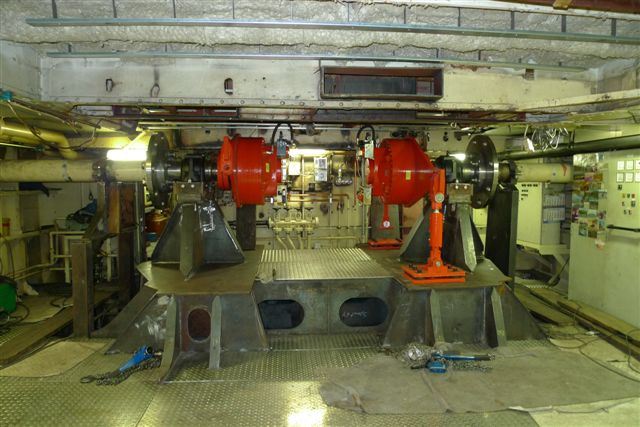
Above : One further benefit of the new engines is that
they are designed so that they are made up of two totally independent
units. Therefore if one unit fails, the other would be able to drive
Goethe to an appropriate point on the water to avoid potentially
unsafe situations. Not that Rhine paddlers were regularly subject
to engine failure - but Goethe's piston problem showed the potential
- and the problem was, in any case, recognised in new rules which
are now governing shipping on the Rhine. Goethe could have sailed
on with her "single" engine to at least 2015 before the
new rules came into operation (and potentially longer, depending
on the date of her last full insprection), but it was used as another
reason why the engines should be changed now - rather than later.
Return to
Goethe
Machinery








